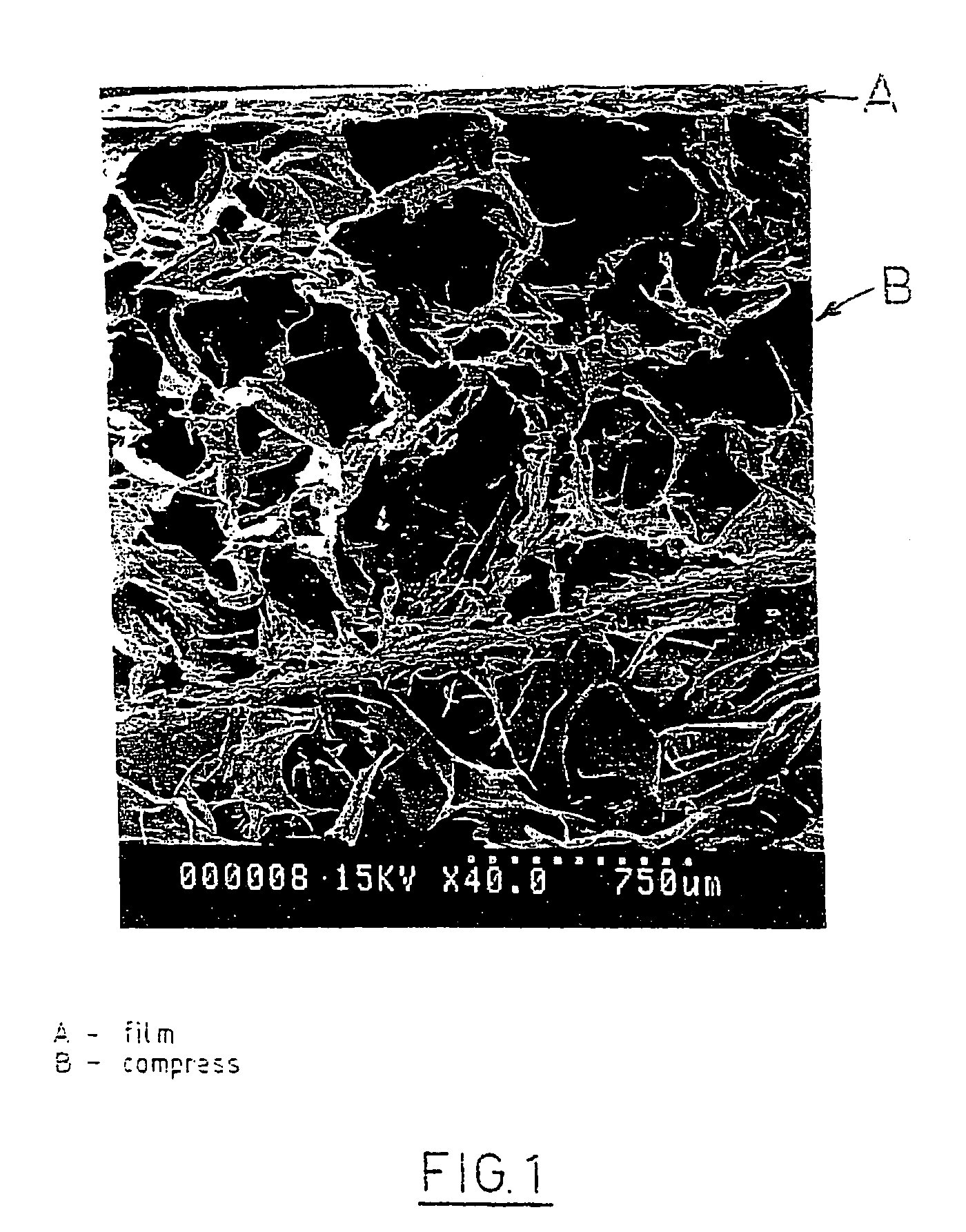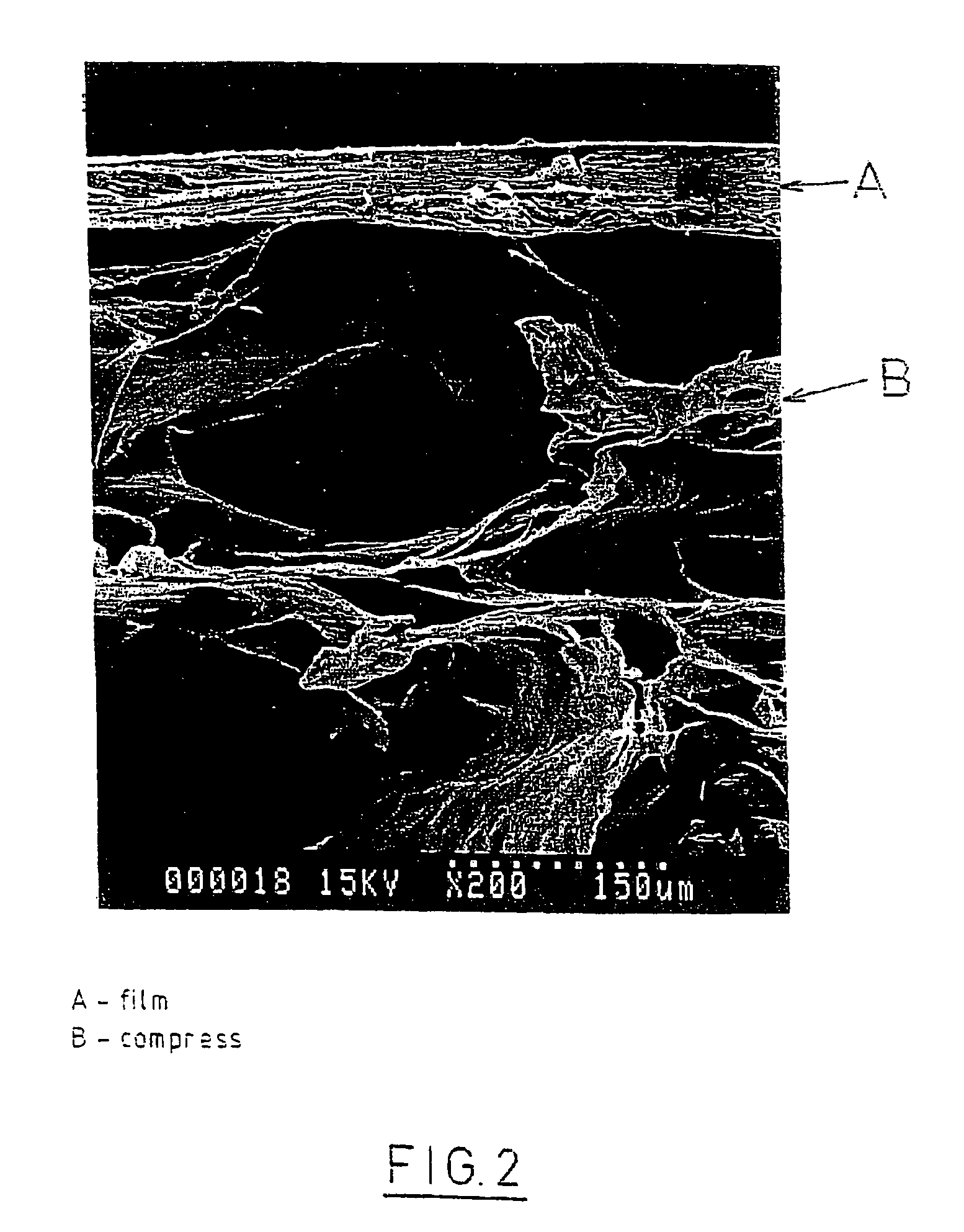Method for preparing two-layer bicomposite collagen material for preventing post-operative adhesions
a bicomposite, collagen-based technology, applied in the field of bicomposite material based on collagen, can solve the problems of difficult production of patches or membranes, difficult control of film formation, and difficulty in preventing interpenetration, and achieve the effect of preventing post-operative adhesion and enhancing hemostatic properties
- Summary
- Abstract
- Description
- Claims
- Application Information
AI Technical Summary
Benefits of technology
Problems solved by technology
Method used
Image
Examples
example 1
[0124]Preparation of Collagen Compresses With a Neutral pH:
[0125]The collagen used in type I bovine collagen, extracted from calf dermis, and possibly rendered soluble through pepsin digestion and, purified by saline precipitation, using the techniques already described. Type I or type III human collagen or a mixture of these in any proportions can be used in the same way.
[0126]A 10 g / l solution of collagen is prepared by dissolving 23 g of damp collagen (12% humidity) in 2070 g of ultrafiltered water, at an ambient temperature below 25° C. It is neutralized using sodium hydroxide to a neutral pH, which leads to precipitation of the collagen.
[0127]The suspension is then poured onto freeze-dry plates, with 0.5 to 1 g / cm2 and dehydrated by freeze-drying, using one cycle lasting about 24 hours.
[0128]Finally, in a variant, the freeze-dried collagen compress can be heated to 60° C. for several hours (4 to 15) which provides it with better cohesion and mechanical resistance in certain app...
example 2
Preparation of Collagen Compresses With a pH of 5-5.5:
[0129]The preparation of collagen compresses with a pH 5-5.5 helps to limit the collagen precipitation phenomenon. It is prepared as in example 1, the only difference being the neutralization of the collagen solution with sodium hydroxide at a pH close to collagen's isoelectric point, i.e. 5 and 5.5.
example 3
Preparation of Collagen Compresses With an Acid pH:
[0130]Slightly acid compresses are prepared as in example 1, the only difference being that the collagen solution is not neutralized, which avoids any collagen precipitation.
PUM
| Property | Measurement | Unit |
|---|---|---|
| thick | aaaaa | aaaaa |
| thickness | aaaaa | aaaaa |
| pore size | aaaaa | aaaaa |
Abstract
Description
Claims
Application Information
 Login to View More
Login to View More - R&D
- Intellectual Property
- Life Sciences
- Materials
- Tech Scout
- Unparalleled Data Quality
- Higher Quality Content
- 60% Fewer Hallucinations
Browse by: Latest US Patents, China's latest patents, Technical Efficacy Thesaurus, Application Domain, Technology Topic, Popular Technical Reports.
© 2025 PatSnap. All rights reserved.Legal|Privacy policy|Modern Slavery Act Transparency Statement|Sitemap|About US| Contact US: help@patsnap.com


